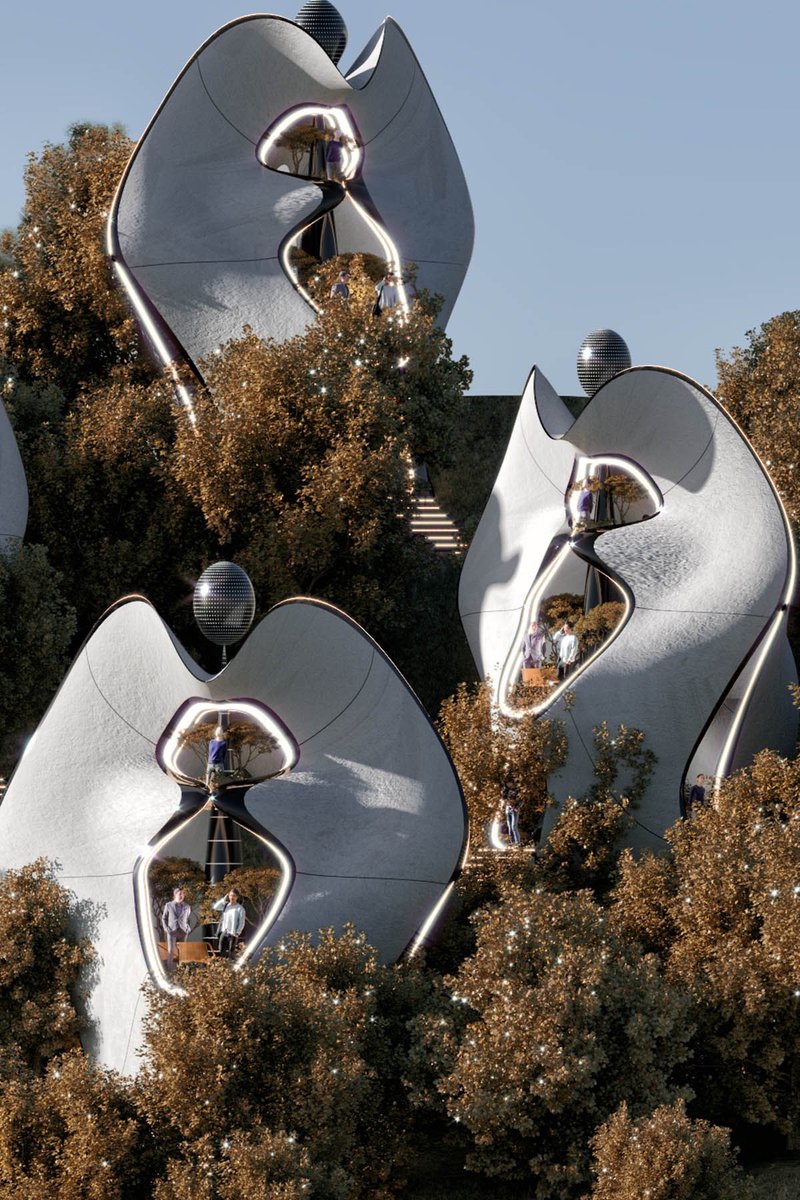Usually, when people consider the advantages of 3D printed housing, they think of affordability, and convenience in the manufacture and distribution process. And with good reason! It’s hard to think of another singular technological process that has as much potential as additive manufacturing to revolutionize humanity’s economic and logistic capacities for home construction.
Another consideration, though, is aesthetics, and while it may not be as urgent a matter as cost and transportability, it might be just as important, in the long run, for getting consumers as a whole fully onboard with 3D printed houses. The Turkish architectural firm MASK Architects, headed by Öznur Pınar Çer, has put the aesthetic angle on full display in its latest project, EXOSTEEL: the name the company has given to the world’s first modular 3D printed steel housing structures. You can’t live in an EXOSTEEL house yet – although given what they look like, if you could, I’d happily leave my studio apartment and head to Europe right now – but they can be seen on exhibit near the Nivola Museum in Sardinia.

The most impressive aspect of the EXOSTEEL design model is that it anticipates being employed to build homes right into their surroundings. Thus, while the word “aesthetic” in the field of construction can frequently be taken to mean “non-functional”, quite the opposite is true, in this case. This shouldn’t come as a surprise, when you consider previous projects that MASK architects have worked on, including an artificial breathing palm module system in Dubai. EXOSTEEL is yet another step in that direction, giving us an idea of what a state-of-the-art garden city could actually look like.

Perhaps the most ingenious aspect of this initial, modular version of the EXOSTEEL home is that the elemental parts were printed specifically to fit into a characteristically sloping Sardinian countryside locale. The pivotal aspect of the design is a hollow central column, with 1/3 of its length inserted into the ground. “Branches” printed to fit the landscape of each house are then attached to the column at the center, and on each of the floors “a perimeter frame divides and supports the facades made up of panels modeled to follow the organic shape of the house”. Also keeping in mind the extreme windiness typical of Sardinian hillsides, the modules were constructed with vents on the houses western and eastern sides to allow the wind to pass through. Finally, the homes are built with “energy towers” intended to act as hubs for community-wide solar and wind-powered electric grids. MASK has named this particular project “Madre Natura”, in homage to the Nivola Museum’s La Madre sculpture, from which the team drew its inspiration.

Of course, no matter how the industry develops, not all 3D printed homes will be able to be located in surroundings as beautiful as Sardinia. But that’s in fact the most exciting thing about this project: theoretically, what MASK has done here could be applied to any environment you can think of, which means the ability to optimize the aesthetic and environmental potential for any home-building project anywhere on Earth. And because of the structural simplicity of the central design – along with the unique capabilities of additive manufacturing for intelligent-construction in the design process – the potential for earth-sheltering homes in an attractive package, at an affordable rate, just started to get far more realistic. MASK’s project truly embodies 3D printing’s potential for eventually finding harmony between art, science, and a socially-just housing market.
Subscribe to Our Email Newsletter
Stay up-to-date on all the latest news from the 3D printing industry and receive information and offers from third party vendors.
Print Services
Upload your 3D Models and get them printed quickly and efficiently.
You May Also Like
3D Printing News Briefs, July 2, 2025: Copper Alloys, Defense Manufacturing, & More
We’re starting off with metals in today’s 3D Printing News Briefs, as Farsoon has unveiled a large-scale AM solution for copper alloys, and Meltio used its wire-laser metal solution to...
3DPOD 260: John Hart on VulcanForms, MIT, Desktop Metal and More
John Hart is a Professor at MIT; he´s also the director of the Laboratory for Manufacturing and Productivity as well as the director of the Center for Advanced Production Technologies....
3D Printing News Briefs, June 28, 2025: Defense Accelerator, Surgical Models, & More
In this weekend’s 3D Printing News Briefs, 3YOURMIND was selected to join an EU Defense Accelerator, and PTC has announced model-based definition (MBD) capabilities within Onshape. Finally, a study out...
EOS in India: AM’s Rising Star
EOS is doubling down on India. With a growing base of aerospace startups, new government policies, and a massive engineering workforce, India is quickly becoming one of the most important...

































